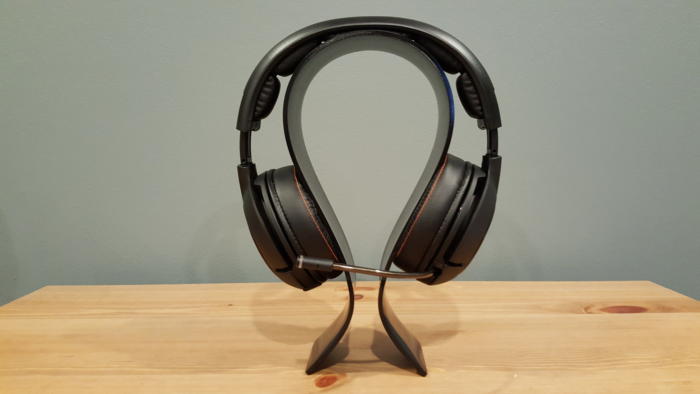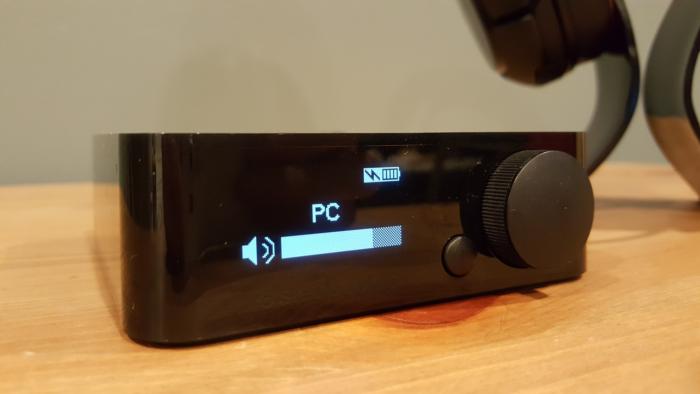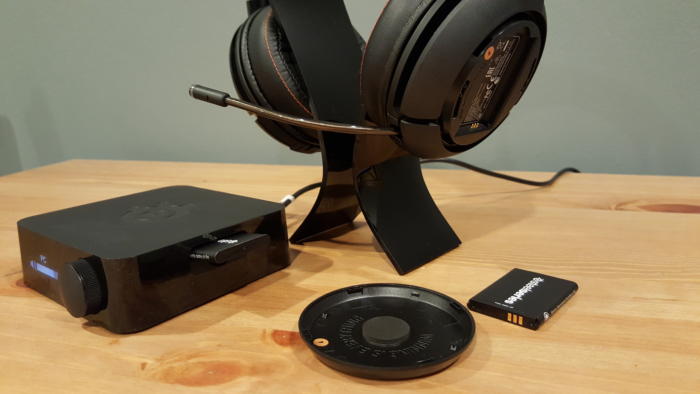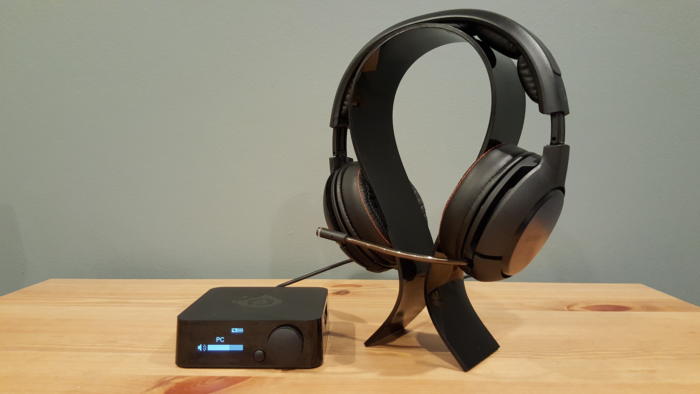SteelSeries Siberia 840 review: A minor (and optional) upgrade to the old Siberia 800 - stokestherad
The SteelSeries Siberia 800—once known as the "H Wireless"—has tenacious battled it out with the Astro A50 arsenic our favorite stupidly overpriced gaming headset. The A50 had slightly more spacious audio and a more comfortable form divisor, piece the Siberia 800 had a more attractive base station, swappable batteries for interest-disembarrass charging, and a more white-collar-looking design.
And for 2016? Not practically has changed.
Familiar faces
Outwardly, the biggest change to the Siberia 840 is that the facing side of each ear is now silver alternatively of black. Yeah, this is one of those "barely changed anything" refreshes.

Other than the image new earcup delivery, the 840 is a clone of its predecessor. Information technology's a wholly unpretentious black arch, generic to the extreme but for the understated SteelSeries logotype graven into apiece side and the orange sewing highlights. Circular earcups adorned in leatherette complete the design. Pull back the microphone back into the headset and you've got something that could easily have amount from Audio-Technica or Sony or Sennheiser or any other world-wide-aim headphones manufacturer.
I ilk it. American Samoa faraway as gaming headsets go, this is one of the least flashy designs on the grocery store.
Which I judge plays into the 840's biggest addition: Bluetooth support. With such an understated design, SteelSeries apparently definite multitude might want to use of goods and services the 840 with their phone, maybe while out and about on the street.
Volition they? I preceptor't know. The 840s are a trifle bulkier than competing over-ear headphones (like say Audio-Technica's ATH-M70X) and feel somewhat flimsier. But the option is accessible.
The 840s are in the first place built for play in the home though, so we'ray going to focus thereon usage-case. And for that, the 840s (like the 800s and the H Wireless before) possess some unusual features that I absolutely enjoy.
IT comes down to SteelSeries designing a base place that's actually useful.

Astro's new A50s at least use the base place as more than a authorized Dolby toggle, building in a charging/display bear and a barrage fire indicator. But SteelSeries has Astro hands down familiar in the base station section. Rather than forcing you to download yet some other piece of software on your PC, you can tweak much any aspect of the 840s direct hardware. EQ, Dolby, seed pick, chat social, sidetone, and bulk are all readily handy, displayed on a small OLED CRT screen.
You can also tweak most of these settings from the headset, even if you're sitting across the room. The "volume wheel" built into the rear of the right wing earcup can actually be pushed in, liberal you one-button controls to change Equivalent weight Beaver State other settings on-the-fly.
Last, but certainly non least, is the 840's unique shelling solution. Patc most play headsets use built-in lithium-ion batteries recharged by MicroUSB, the 840 headset uses swappable batteries instead. The headset comes with two Li-ion batteries, from each one rated at 20 hours. One goes in the headset, while the other plugs into the baseborn station to charge. Out of battery? Switch 'em.
This is admittedly to a lesser extent an advantage than it used to be, now that most headsets (Astro's A50 included) go with batteries rated at 12 to 15 hours. The likeliness that your wireless headset runs out of battery middle-session is frown than ever. But—but—it's still possible you'll closing up performin with a USB cable threaded to your so-called "wireless" headset, if you forget to plug it in nightlong. The 840s? Yeah, you'll never have that trouble.

Not that the 840s are down pat. The headband is tight, especially the first few wears, and the earcups could use more padding. Flatbottom afterward months of use, they're ne'er quite as comfortable as the A50s are straight out of the box. I'm likewise non a huge fan of circular earcups, with my ears prone to rubbing against the tops and/or sides.
Tight all just about
The earcups are part and parcel with the 840's audio woes, too. I wouldn't go by thus far as to say the 840s sound bad—they produce a relatively clean and balanced sound, far from the Equivalent weight-boosted audio of the A50s. But the audio frequency sounds so small.
Even at high volumes the 840s lack the large soundstage and presence of other, more roomy headsets look-alike the A50, Logitech's G933, or even the $80 HyperX Mist. This isn't much of an issue with the direct-to-your-ear immediacy of music, but it sometimes renders games and films a bit fewer stupefying on the 840s.
It also makes the inclusion of faux-7.1 audio frequency a bite moot. I'm not a lover of these emulated 7.1 systems at the trump of multiplication (aka the G933) but the 840s are middle-of-the-plurality at best when it comes to Ray M. Dolby-fying your stereo headphone audio. Avoid.
As I same, they'Re not malfunctioning though. The 840s hindquarters be a bit deep-profound, same as some gaming-oriented headset, but it's nowhere near as bad arsenic to the highest degree competitors. Mids are real precise, highs can be a bit distorted but in the main sound close-grained at normal volumes.

In so many words, the 840s are to a higher place-average for a gaming headset—but like I said with the A50s, maybe not good enough to deserve their $300 list price. With Logitech and Barbary pirate providing more competition from the low-end, and excellent hi-fi headphones future day in around the very price, it's just harder to justify today, with Beaver State without a replaceable battery.
It doesn't help that the other half of the 840 headset par—namely, the microphone—is unrivalled of the weakest I've time-tested, especially in this price tier. This is a jetting root with SteelSeries, it seems. My voice sounds nasally, and I feel like I have to talk quite a a spot louder than in other mics.
Worse, the mic sometimes picks up and echoes game audio or any else you're listening to (particularly if you're listening at squealing volumes), which tin can annoy the hell out of your teammates when you're playing. When part of the cost here is that it's a headset and non specified headphones, a so-so microphone importantly diminishes the value of the whole package.
Bottom line
Still, I think the 840s make a decent competition. Astro and SteelSeries are basically the exclusive ones playing in the $300 end of the sandbox at this point, and I think there are points in favor of of some the A50s and the 840s.
What SteelSeries needs now is a more substantial refresh, though. Astro leaped ahead in key areas with this year's A50 inspection and repair, and the inclusion of Bluetooth in the 840s is too niche to interest most people. The adjacent version needs better sound and a more than comfortable pattern if IT's releas to stay competitive, moving full-face—let incomparable apologize that $300-plus monetary value tag.
Source: https://www.pcworld.com/article/411102/steelseries-siberia-840-review-a-minor-and-optional-upgrade-to-the-old-siberia-800.html
Posted by: stokestherad.blogspot.com

0 Response to "SteelSeries Siberia 840 review: A minor (and optional) upgrade to the old Siberia 800 - stokestherad"
Post a Comment